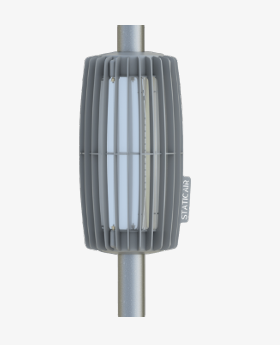
Some New York City communities experience higher levels of air pollution than others. The long-term solution is to reduce the sources of emissions through the electrification of transportation and buildings but this will take many years of incremental progress. The Department of Health and Mental Hygiene (DOHMH) is interested in exploring the improvement of air quality conditions in communities through innovative interventions.
Opportunity: Identified through a 2019 Open Innovation Challenge, Netherlands-based Static Air manufactures particulate matter reduction systems that attract PM2.5 – PM10 and pull it from the air. Schools, playgrounds, and other spaces where vulnerable populations congregate can be fitting locations to install these devices and potentially improve air quality as a supplement to planting trees and reducing emissions sources.
Static Air will provide three pole-mounted Pamares units to install in NYC for six months. Real-time air quality monitoring devices will be installed to measure the efficacy of the Static Air devices through the change in local air quality.

Project Timeframe
October 2023 – June 2024
| Sponsors |
| Static Air |
| Department of Health and Mental Hygiene (DOHMH) |
| Office of Technology and Innovation (OTI) |
| Project Category |
| Air Quality |
